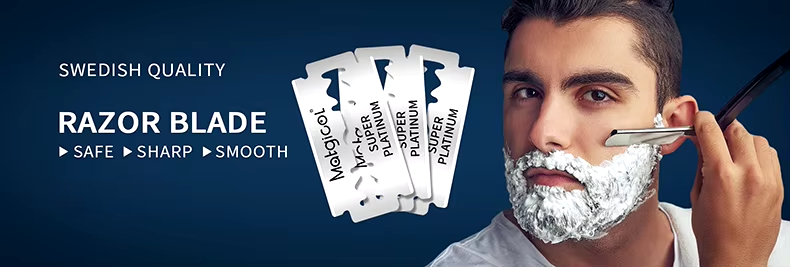Razor blades are engineered with exceptionally thin and sharp edges to enable effortless cutting. However, despite their initial sharpness, they cannot maintain their edge indefinitely. This technical document outlines the seven primary reasons for the degradation of razor blade sharpness over time, providing a comprehensive understanding suitable for manufacturers, engineers, and users.

1. Wear and Tear
Each instance of razor blade usage involves contact with various surfaces, resulting in progressive wear of the blade’s edge. During shaving or cutting, the blade interacts with the material being cut, causing microscopic deformations and abrasion. Over time, these minor changes accumulate, leading to a noticeable dulling of the blade.
2. Material Properties
Razor blades are typically manufactured from stainless steel or carbon steel, chosen for their durability and resistance to corrosion. However, these materials are not entirely impervious to wear. Inherent microscopic defects and impurities within the metal can lead to microfractures or accelerated wear during use, compromising the blade’s longevity.
3. Chemical Reactions
Exposure to environmental factors such as moisture, air, and other reactive agents triggers chemical reactions on the blade’s edge, including corrosion and oxidation. These reactions progressively degrade the edge’s integrity, reducing its sharpness over time.
4. Plastic Deformation
The ultra-thin edge of a razor blade is highly susceptible to plastic deformation, where the metal bends or warps rather than retaining its original shape. This is particularly evident when the blade encounters harder materials or uneven pressure during use, resulting in a diminished cutting edge.
5. Alteration of Blade Geometry
The precise geometry of a razor blade’s edge is critical to its cutting efficiency. Factors such as wear, chemical reactions, and deformation can alter this geometry over time, reducing sharpness even if the blade remains visually intact.
6. Manufacturing Tolerances
Despite advanced manufacturing techniques, razor blades are not perfectly uniform. Minor deviations in the blade edge, inherent to production tolerances, can cause uneven wear patterns, leading to faster dulling in certain areas.
7. Friction and Heat
The cutting process generates friction and heat at the blade’s edge, subjecting it to thermal and mechanical stress. This contributes to the wear and degradation of the sharp edge, further accelerating the loss of sharpness.
Conclusión
The degradation of razor blade sharpness is an inevitable outcome of multiple interrelated factors: physical wear, material limitations, chemical corrosion, mechanical deformation, geometric changes, manufacturing variances, and operational stresses. Even with meticulous maintenance, frequent use and environmental exposure progressively impair the blade’s cutting efficacy, ultimately necessitating replacement. Understanding these factors enhances blade design, usage practices, and expectations for durability.
 Xiruiglobal.COM
Xiruiglobal.COM

